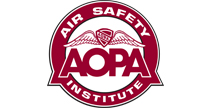Nighttime VFR into IMC proves deadly
CEN12FA101
 By David Jack Kenny
By David Jack Kenny
Why would you do it? Some of the events that destroy aircraft and their occupants are truly accidents, things that couldn’t have been foreseen. But far more often, they’re the predictable result of choices made by pilots who must have known they were asking for trouble. Why does anyone do that?
About 6:30 p.m. on Dec. 9, 2011, a Piper PA-28-235 Dakota took off from Guymon, Okla., bound for Goldsby, about five miles south of Norman. Conditions were not good for a VFR cross-country flight. The pilot got a weather briefing about 45 minutes before takeoff that warned of ceilings below 1,000 feet and visibilities of less than three miles in mist and fog for the first three-quarters of the 217-nautical-mile route. At the time of departure the ceiling at Guymon was 600 feet overcast; the visibility was still 10 miles, but the temperature and dew points were just one degree apart and both were below freezing. And, of course, it was dark; civil evening twilight having ended half an hour earlier.
The pilot did better than might have been expected. He managed to keep the airplane upright and clear of obstacles for nearly an hour and a half of the planned two-hour flight. In the end, though, the crash killed both him and his passenger, the outcome of nearly 90-percent of all accidents that result from attempts to fly VFR in IMC. The impact was near-vertical, leading investigators to conclude that the pilot had become disoriented and lost control of the airplane. Conditions at the airport closest to the crash site included 7 miles visibility and overcast ceilings between 900 and 1,100 feet.
The 47-year-old pilot had been flying often, but not very long. He had logged his first lesson less than a year before, on Jan. 15. Since then, he had accrued 191 hours, including 128 as pilot in command of which 99 were solo. He’d passed his private pilot checkride on Aug. 6, barely four months before the accident. He had only the minimum instrument training required to get the sign-off; his logbook showed exactly 3.1 hours under the hood.
This brief summary of a short flying career suggests a few things about this pilot. Like many of us, once he started learning to fly he probably found that he loved it—191 hours is a lot for the first year in the cockpit, and he bought the accident airplane only nine weeks after that initial lesson. (Scheduling difficulties might have contributed to that; his logbook recorded only 8.7 hours during those first nine weeks.) Assuming he received competent instruction, his training had to include repeated warnings about the risks of flying VFR into IMC, with practical demonstrations of the difficulty of maintaining control without visual references during those hood sessions. He would have been advised of the risk of spatial disorientation on dark nights, even in VMC, and of the difficulty of seeing clouds before you enter them in the dark. The risks of in-flight icing when visible moisture meets sub-freezing temperatures would have been covered, as would the relationship between temperature, dew point, and fog. His 16 hours of night time before the accident flight should have been enough to prove that hills, unlit towers, and other obstructions can also rush up very quickly in the dark. In short, nothing in his experience should have suggested that the level of risk presented by this flight—in the dark, under variable low ceilings, in weather conducive to ice and/or fog at altitudes that compromised obstacle clearance and put stall recovery in doubt—was even remotely reasonable. So why did he do it?
The official record doesn’t indicate whether he was under any unusual pressure to get home that night. The accident took place on a Friday and the pilot was co-owner of the construction company that was the airplane’s registered owner. This seems to rule out both aircraft rental and job schedules as factors in his decision. According to family members cited in the NTSB report, the two had spent the past two weeks on a hunting trip; two shotguns were found in the wreckage. After two weeks, perhaps it was just time to get home.
The route from Guyman to Goldsby is a good illustration of the advantages of going by air--when circumstances allow. The 217-nm straight-line flight becomes more like 300 statute miles by road. Still, most Westerners get used to long drives, and the FBO at Guymon lists car rentals among the services it offers. No one likes to leave an aircraft stranded away from home—but if it was absolutely necessary to get back that night, a safer alternative was available. If they had started driving shortly after his weather briefing, they probably would have made it home by 10 p.m.